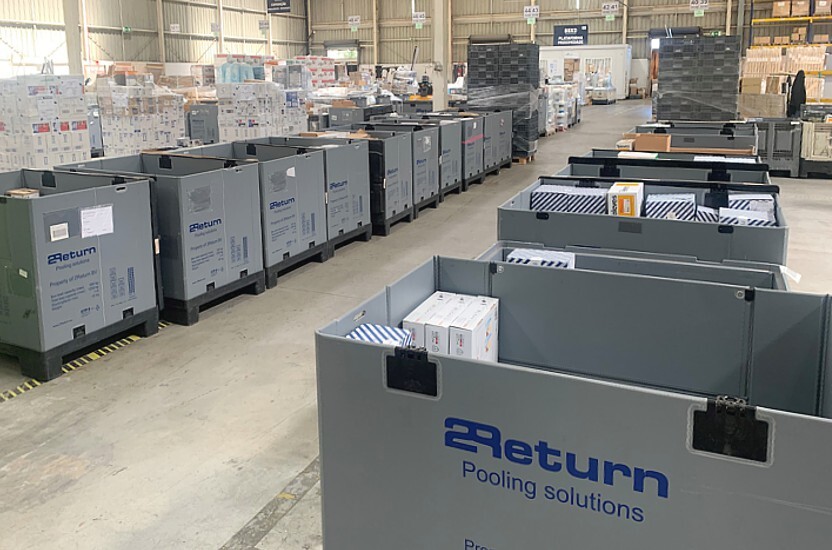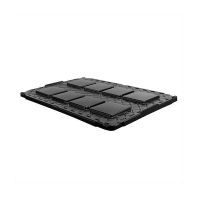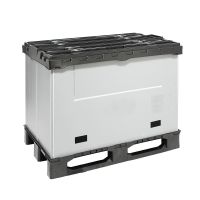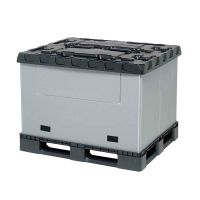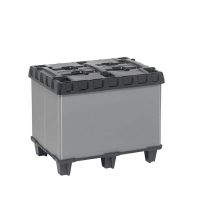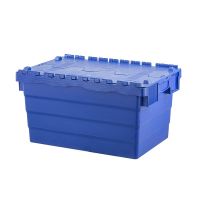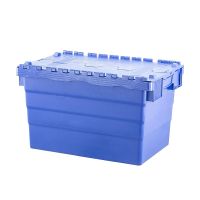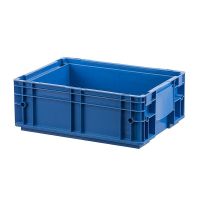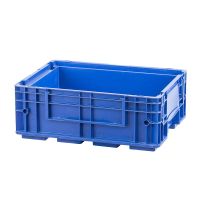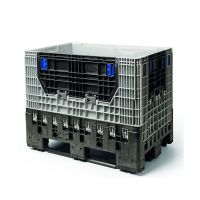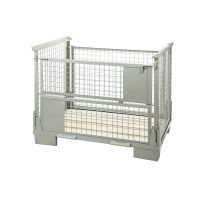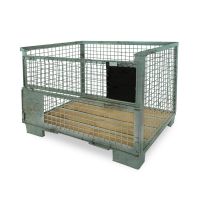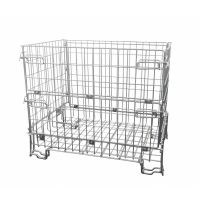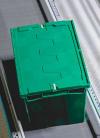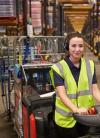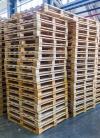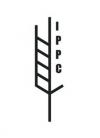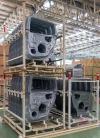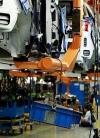When was the last time you evaluated your packaging costs? Are you looking for savings in your supply chain right from the purchasing stage? Now is a good time to do a thorough analysis and look at new opportunities. As logistics systems evolve and become even more organised, they create new opportunities to use packaging to reduce costs and raw material consumption.
Whether your business should use disposable or returnable packaging depends on your shipping cycle and your individual packaging needs. There is no "one size fits all" variable that determines the best type of packaging for your supply chain. However, you will find that in many cases the use of returnable packaging is highly necessary and justifiable, moreover, it saves time, resources and the environment.
Most commonly used returnable packaging
Returnable packaging is used repeatedly, most often in the transportation of products. They are usually designed for durability, ergonomics, ease of cleaning and repair with a folding or nesting construction. All of these features facilitate return to the original user, who may use such packaging again and again.
There are several categories of reusable packaging in common use. This includes, for example:
- Euro pallets and plastic pallets
- Pallet collars, which together with a pallet and cover form a secure box
- Plastic nestable boxes, Attached Lid Containers
- Collecting containers such as pallet boxes or roll containers
These containers may be made of stainless steel and other metals , plastic, wood, composite or other materials.
How does the design of returnable packaging reduce transport costs?
We will illustrate this with the example of folding crates with lid . They are easy to set up and assemble, taking literally seconds. The high compatibility with the pallet and the fixed connection of the pallet, side walls and lid eliminates the risk of losing items.
The construction of this box pallet allows safe stacking, without the risk of shifting a pallet with foil or tape cargo. What is more, it reduces the cost resulting from the need to purchase foil, tape and disposable wooden pallets, which may later be difficult to resell.
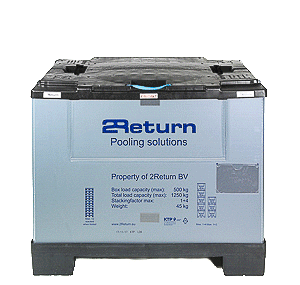
How to calculate the return on investment of returnable packaging?
Plastic returnable packaging is a long-term investment - this means that the rate of return is usually a minimum of 5 years.
In the cost analysis you need to take into account the number of carriers needed in circulation, pallet repairs, the cost of purchasing packaging film and tapes and pallet repairs, against the cost of renting returnable packaging or a one-off purchase.

When is it profitable to use returnable packaging?
The initial investment involved in switching to returnable packaging can be a roadblock to switching to returnable packaging. However, there are some very important considerations to take into account. The lifespan of returnable packaging can be five years or more. In addition to its high shelf life, the product can go through the entire supply chain in the same packaging, multiple times. This means a long-term return on investment that will far outweigh what your company spends on disposable packaging.
The experience of many companies shows that the use of returnable packaging is beneficial when:
- Return distances are short and involve low transport costs
- The lifetime of the container is long
- There is a constant demand for the products
Savings on multiple levels
#1 No investment costs
You can rent packaging that is managed and maintained by the rental company, Rotom (2Return) . This gives you cash flow benefits and saves you time.
#2 You do not incur the cost of purchasing additional packaging
If you are already using standard returnable packaging, you save on buying more wooden pallets, stretch film or strapping.
#3 Full optimisation and speed
Additionally, it is important to remember that by using reusable packaging you optimise loading speed and storage space, gain a guarantee of component integrity and have full control over packaging costs.
Sustainable solutions and no tax on plastic
Pallet box
It works closed loop so we avoid the tax on putting plastic into the market. Such packaging circulates throughout its life cycle in a closed loop between supplier and customer. With approximately 100 rotations, the life cycle of such packaging is 7 to 10 years.
With the appropriate technical handling culture, the box is returned to the supplier as used packaging and reprocessed to produce new packaging.
A wooden pallet?
It means a much shorter lifespan, frequent purchase of new pallets to complete the circulation of packaging at the customer, and the possibility of losing the packaging. You also have to add to the costs product fees, the cost of repair, disposal, and losses that the company incurs due to damage, and additional packaging such as film or tape.A wooden pallet means a much shorter lifespan.
Saving time and money
The long-term savings from returnable packaging alone are enormous. Time spent on orders and the constant stream of money spent on disposable packaging is greatly reduced, if not eliminated.
The customer saves time that would have been spent purchasing new packaging. Instead of purchasing monthly disposable packaging systems, returnable units are typically a one-time capital expenditure. The higher initial purchase price ultimately translates into a lower cost of supply as a result of multiple reuses.
Reusable packaging is also associated with better product protection and less damage. Cost savings in storage and transportation are achieved due to the unique strength of reusable containers for stacking when full and the folding or nesting design when empty.
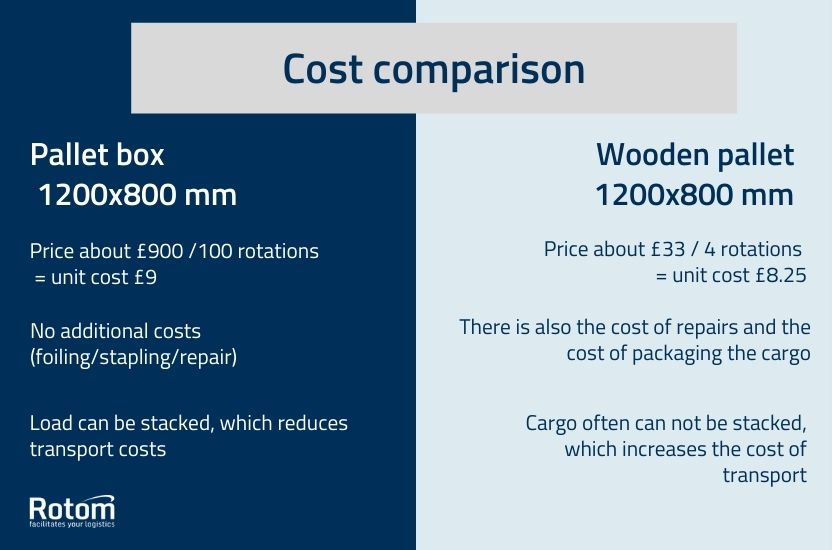
Calculate with a specialist what your return on investment would be
Rotom has been in business for over forty years and has continually supported major European companies in their transition to reusable returnable packaging. Are you curious about what your return on investment would be? You don't have to wait too long for information, just fill in thecontact form and our experienced specialists will get back to you.
Basic questions you may be asked by our representative may concern such issues:
- What is the required number of packs, i.e. how many units are in circulation?
- What is the level of packaging turnover per year? This has an impact on the level of investment.
- What percentage of packs do you buy back each year or send for repair?
- How much packaging film or tape is introduced each year?
- What product will be packaged? This is very important
- What is the shipping location?
This matters because Rotom (2Return) has branches throughout Europe. If you have a homogeneous transport medium (e.g. box pallets), your packaging circuit can be "linked" to already existing processes. In such a situation we can significantly optimise the transport costs of empty packaging, which will clearly result in cost savings and a faster return on investment.
These are just some of the issues that are crucial when developing a returnable packaging system for a customer. We have extensive experience in offering packaging that meets the unique needs of our customers and changing supply chains. If you would like to find out more about how we can optimise your bottom line through disposable or returnable packaging, please do not hesitate to contact us!


